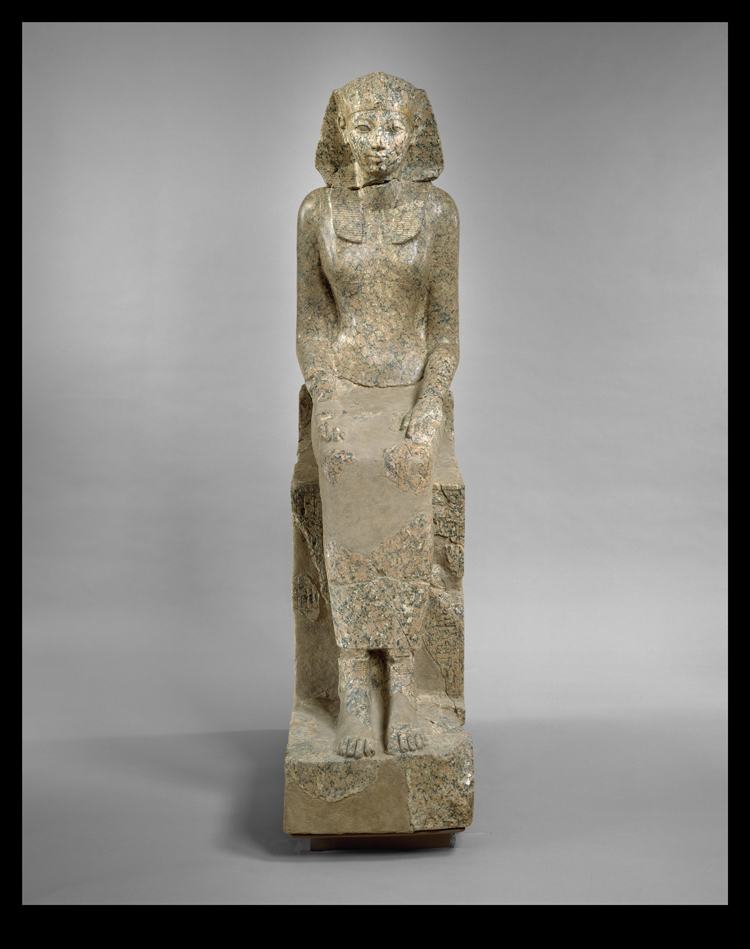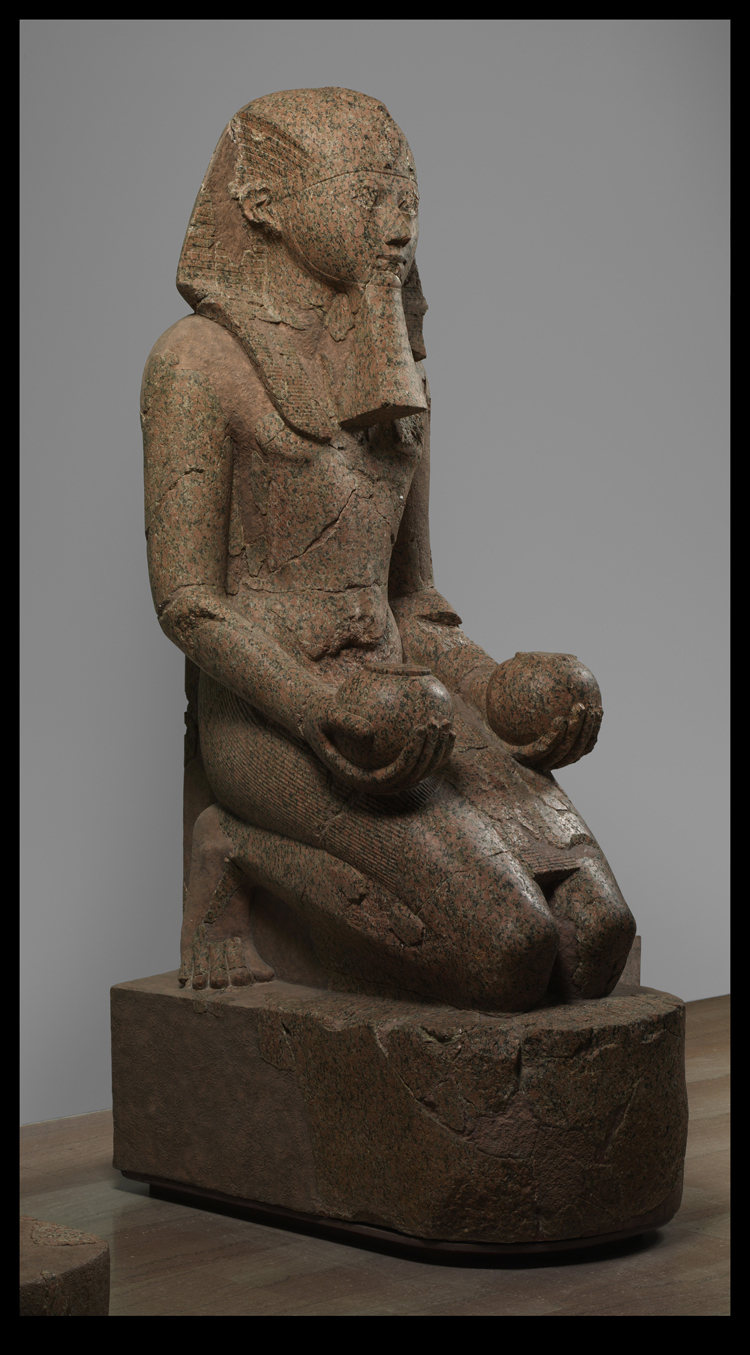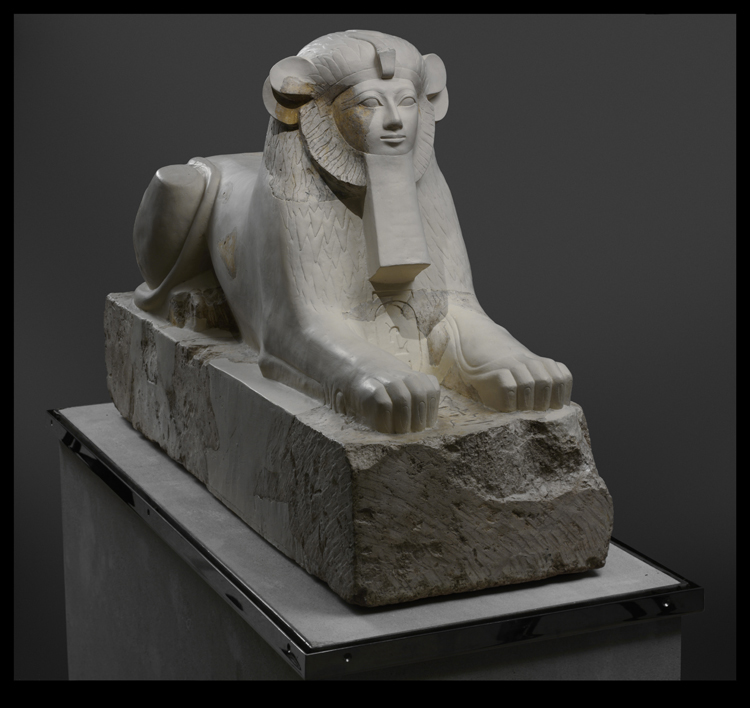1.1.2 DOCUMENT 1.2: Three Statues of Hatshepsut from Deir el-Bahri, ca. 1479–1458 B.C.E.
DOCUMENT 1.2
Three Statues of Hatshepsut from Deir el-Bahri, ca. 1479–1458 B.C.E.
The artists that produced images of Hatshepsut were not all given the same instructions, and their depictions vary considerably. These examples give a sense of the range of representations of the female pharaoh. The first, “The Female Pharaoh Hatshepsut,” presents Hatshepsut with delicate facial features and a feminine body. The inscription on the statue identifies her as the “Lady of the Two Lands” and the “Bodily Daughter of Re.” At the same time, she is shown wearing the nemes headcloth, an accessory usually reserved for a reigning king. The second, “Large Kneeling Statue of Hatshepsut,” shows us a very different Hatshepsut. Here, the kneeling figure is decidedly masculine. The inscription describes her as “the one who gives Ma’at to Amon,” underscoring her role as the source of order, harmony, and justice in Egypt. The final statue, “Hatshepsut as a Maned Sphinx,” shows Hatshepsut with the body of a male lion. Interestingly, analysis of pigment remains on Hatshepsut’s face shows that is was originally painted yellow, the color Egyptian artists reserved for female subjects. As you examine the statues, ask yourself why the artists made the choices they did. What were they trying to tell viewers about Hatshepsut?



QUESTIONS TO CONSIDER
Question
What do the statues tell you about Egyptian ideas about power? Was power associated exclusively with men, or were there both masculine and feminine forms of power? How might a single individual possess both?
Question
Which statue do you find most intriguing? Why?